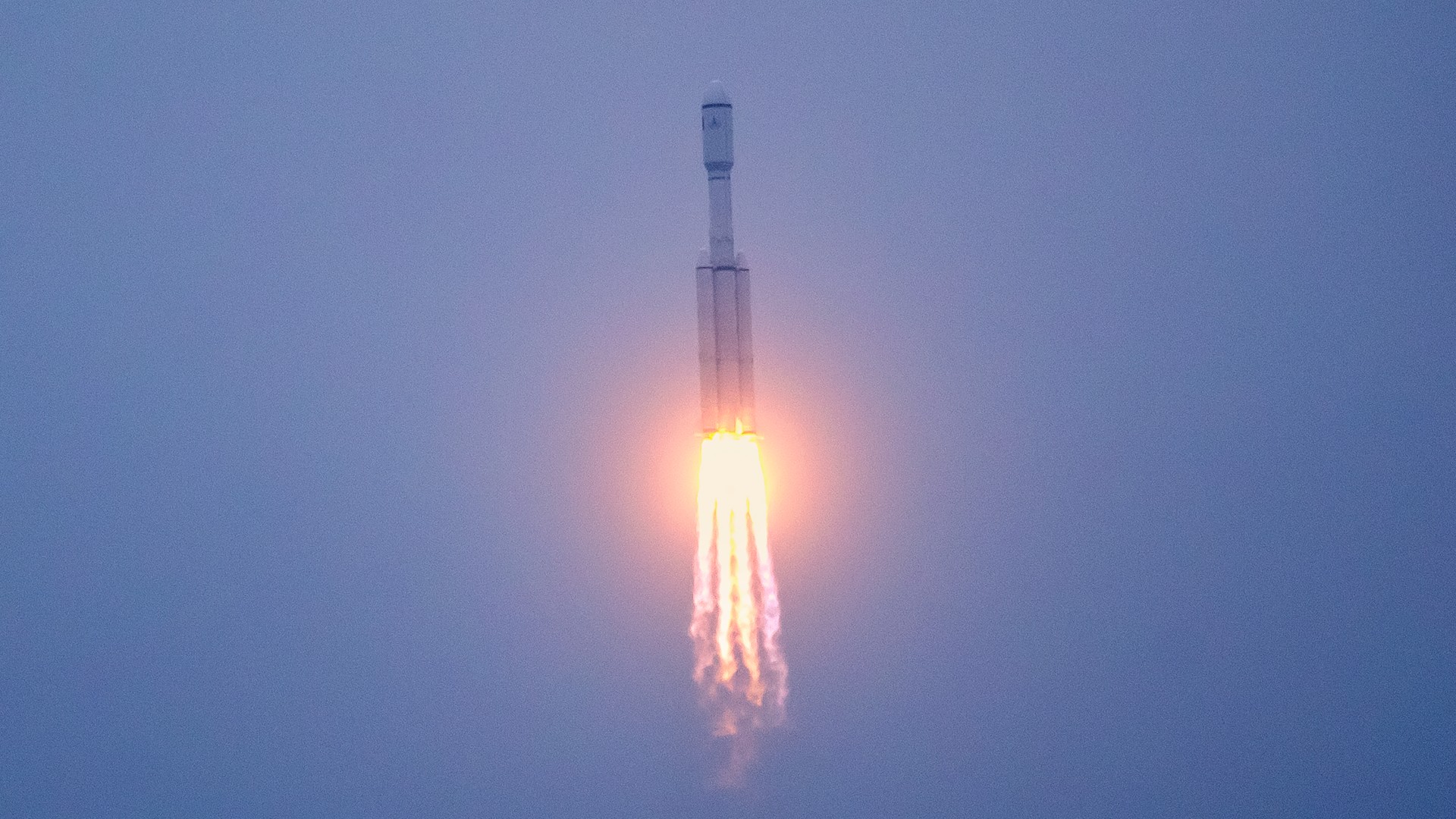China launches satellite to support future moon missions (video)
The spacecraft is what's known as a relay satellite, meaning it will help pass messages back and forth between Earth and the moon.
China launched a satellite toward the moon this week to help support the country's lunar ambitions.
On Tuesday (March 19), a Long March 8 rocket took off from the Wenchang Satellite Launch Center on the southern Chinese island of Hainan carrying the Queqiao-2 satellite. The spacecraft is what's known as a relay satellite, meaning it will help pass messages back and forth between China's Chang'e moon spacecraft, as well as other vehicles on the lunar surface, and mission controllers on Earth.
Queqiao-2 is intended for a highly elliptical orbit around the moon that will enable it to support missions both at the lunar south pole and on the moon's far side, SpaceNews reports.
Related: China to launch 1st-ever sample return mission to moon's far side in 2024
Earlier this month, on March 14, China launched two other spacecraft toward the moon in an unannounced launch. In fact, the launch was first made public when China's Xinhua news agency announced that the pair of spacecraft had not reached their intended orbit.
"The first and second stages of the rocket operated normally, while the upper stage encountered an abnormality during flight, causing the satellites to fail to accurately enter the preset orbit," Xinhua's statement reads. "The relevant disposal work is currently underway."
Little is known about the two spacecraft, which are called DRO-A and DRO-B, but their names imply they were intended for distant retrograde orbit (DRO). DRO is a lunar orbit located high above the moon that moves opposite the moon's rotational direction around Earth. The spacecraft also appear to be part of a technology demonstration meant to help establish lunar infrastructure as opposed to part of China's moon exploration program, SpaceNews reports.
Breaking space news, the latest updates on rocket launches, skywatching events and more!
Even as NASA races to put astronauts, scientific payloads and lunar landers on the moon — and as the U.S. Space Force seeks to establish a presence in cislunar space (the area around the moon) — the American military is growingly increasingly concerned with China's lunar ambitions.
Space Force leaders have stated that China's moon exploration plans and the new lunar orbits into which the country is lofting satellites could be "potential attack vectors," DefenseOne reports.
"These are terrestrial conflicts that we hope we can deter and we also don't want them, although it's more and more likely, [to] extend into space or even start in space, but they’re terrestrial conflicts. Now someday in the future that may change, but for now I'd be more concerned just about what these new orbits, a moon presence — what that does for potential attack vectors to our traditional operating orbits," Brig. Gen. Anthony Mastalir, commander of U.S. Space Forces Indo-Pacific said during an Aerospace Testing Seminar hosted by the Aerospace Corporation this week.
Even NASA chief Bill Nelson has made hand-wringing comments about China's moon plans. "It is a fact: we're in a space race," the NASA administrator said in 2022. "And it is true that we better watch out that they don't get to a place on the moon under the guise of scientific research. And it is not beyond the realm of possibility that they say, 'Keep out, we're here, this is our territory.'"
China intends to land astronauts on the moon by 2030. Along with Russia, the nation i currently working on an International Lunar Research Station, which it plans to begin building with the Chang'e 7 and 8 missions around 2026 and 2028.

Brett is curious about emerging aerospace technologies, alternative launch concepts, military space developments and uncrewed aircraft systems. Brett's work has appeared on Scientific American, The War Zone, Popular Science, the History Channel, Science Discovery and more. Brett has English degrees from Clemson University and the University of North Carolina at Charlotte. In his free time, Brett enjoys skywatching throughout the dark skies of the Appalachian mountains.


